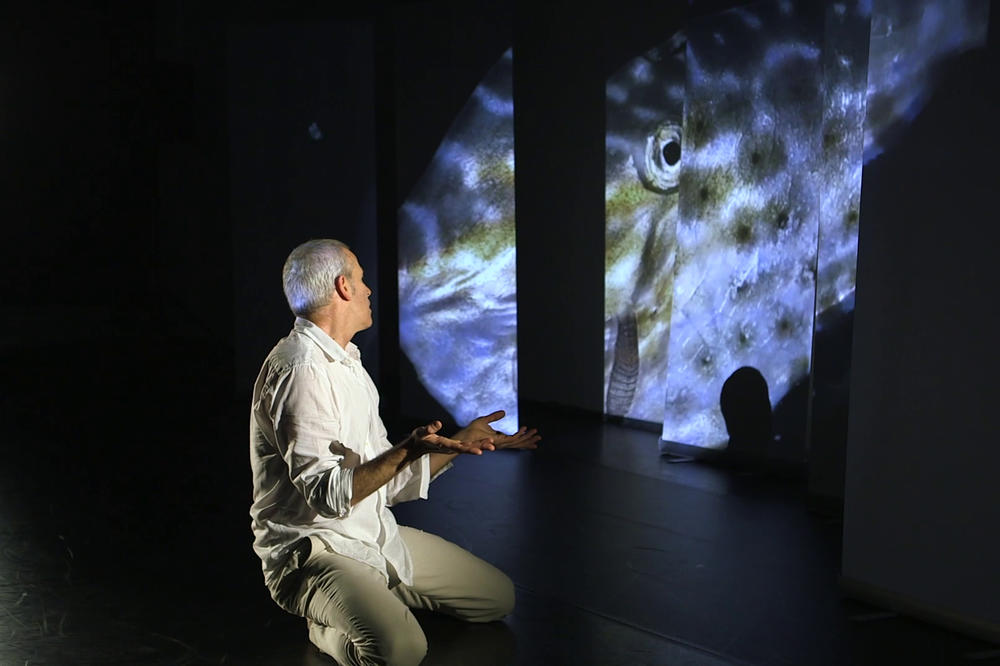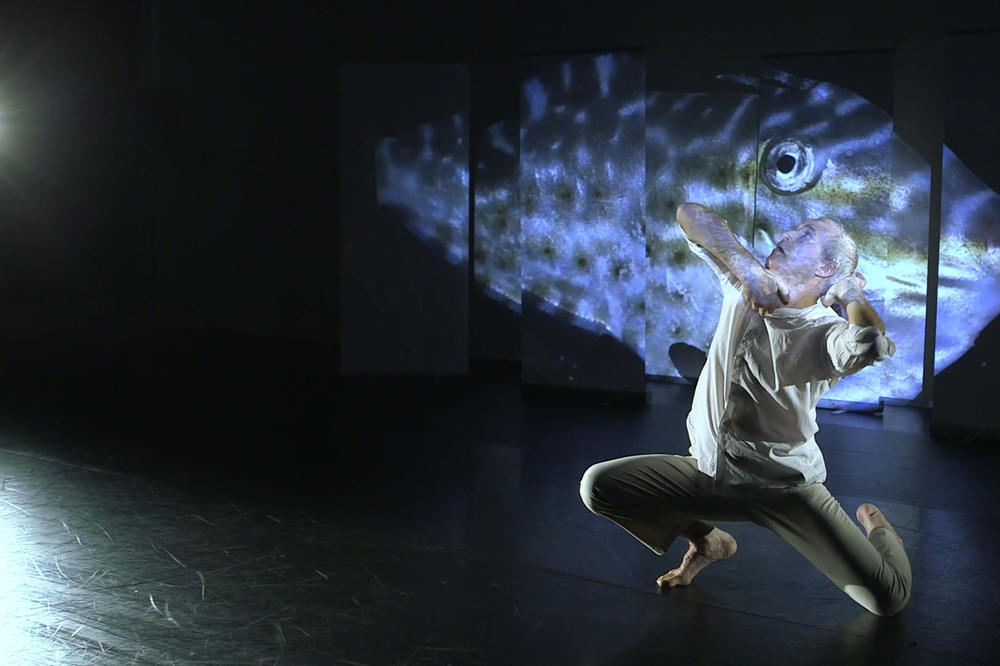Is This Research – or Art?
The Einstein Research Unit CliWaC and the Theater of the Anthropocene are organizing a salon on the future of water in Berlin-Brandenburg
Feb 24, 2022
What do people think about climate change and a potential scarcity of water? The CliWaC research unit is seeking new ways of reaching out to individuals to explore these topics.
Image Credit: Theater of the Anthropocene
There are various ways to present research to an interested public in an entertaining way, for example, in science slams. In this format scientists use a large stage to present and explain complex scientific processes in a concise and understandable way. However, many researchers are interested in a two-directional knowledge transfer. That is, they do not want to merely present knowledge, but rather, they want to exchange ideas and perceptions with artists and the public and thereby generate new knowledge.
In the Einstein Research Unit Climate and Water under Change (CliWaC), scientists from the Berlin universities making up the Berlin University Alliance (BUA) are investigating how climate change is affecting the availability and quality of water in the Berlin-Brandenburg region and how water resources can be managed sustainably under altered conditions.
Britta Tietjen, a professor at the Institute of Biology at Freie Universität Berlin and spokesperson for the research unit, explains, “We do not only want to scientifically describe the effects of climate change. We also want to understand the risks people perceive in relation to climate change and the potential solutions they see to address these risks.”
Three Evening Events
Ecologist Britta Tietjen leads the Einstein Research Unit Climate and Water under Change (CliWaC).
Image Credit: Personal collection
She continues, “Art is a wonderful way to start a conversation with people because we can express our feelings, fears, and thoughts with and in art.”
Jörg Niewöhner, co-spokesperson for the research unit and a professor at the Institute for European Ethnology at Humboldt-Universität zu Berlin, already cooperated with the Theater of the Anthropocene, an initiative at Humboldt-Universität that brings together art, science, and civil society.
“This fits perfectly with our research approach,” says Britta Tietjen. Thus, an idea evolved to organize three evenings with an audience together with the theater group in the Humboldt Laboratory of the Humboldt Forum.
Science Salon
Inspired by the Berlin salons of the 18th century, the organizers plan to create a space for encounters, artistic experience, and knowledge in which all the participants approach the risks of climate change for ecosystems as well as for the water supply for people in Berlin and Brandenburg.
In several mini-performances, the musician Kevin Mooney, the dancer Ziv Frenkel, and the actress Claudia Burckhardt, among others, will present various exhibits and performances of aspects related to water. Visitors will be encouraged to participate in performances and to talk to researchers about a sustainable water future. “I am very curious about the event. The outcome is completely open,” says Britta Tietjen.
Inspired by the Berlin salons of the 18th century: Exhibits and various aspects related to water will be presented in several mini-performances.
Image Credit: Theater of the Anthropocene
For the second phase of the AnthropoScenes transfer project, the theater group is planning to drive through Brandenburg in a bus and perform at market squares.
“In this way we want to reach out to other people, make them aware of the effects of climate change in their region, and learn about their perceptions,” says Professor Tietjen. “We want to find out what they think about the impending water shortage, what problems they anticipate, and jpw they envision fair solutions.”
Using Implicit and Explicit Knowledge
In January researchers of the CliWaC project started with “participatory modeling,” a format in which they invited stakeholders and interest groups from the respective regions to discuss problems, research questions, and possible future scenarios.
“We are focusing on three case studies,” explains Professor Tietjen. “The topic of the first case study is the Groß Glienicker See and Sacrower See, whose water levels are steadily falling and no one knows exactly why. The second study deals with the Spree catchment area, and in the third we are dealing with extreme precipitation in the city.”
For biologist Tietjen, this exchange is an important addition to the data that researchers collect themselves. “This way, we use the implicit and explicit knowledge of those involved to get a more comprehensive overview of the situation.”
This article originally appeared in German on November 24, 2021, in campus.leben, the online magazine of Freie Universität Berlin.
Further Information
- Too much. Too little. Too dirty. A salon on the future of water in Berlin and Brandenburg,
Humboldt-Labor im Humboldt-Forum, Schlossplatz, 10178 Berlin;
Three events were originally planned for November 26, 27, and 28, 2021. Due to the increasing number of Covid-19 infections, these events were postponed at short notice until April 2022. - Now re-scheduled:
Friday, April 22, Saturday, April 23, and Sunday, April 24, 5:45 p.m. to 8:45 p.m. - Admission is free. Tickets will be bookable online as of mid-March:
https://www.humboldtforum.org/en/programm/termin/discourse/too-much-too-little-too-dirty-34706/



